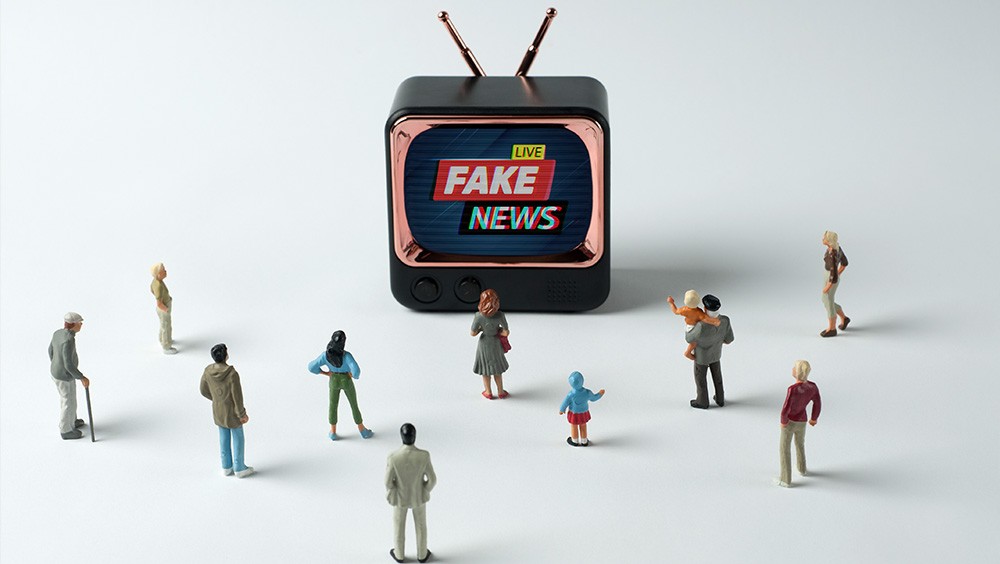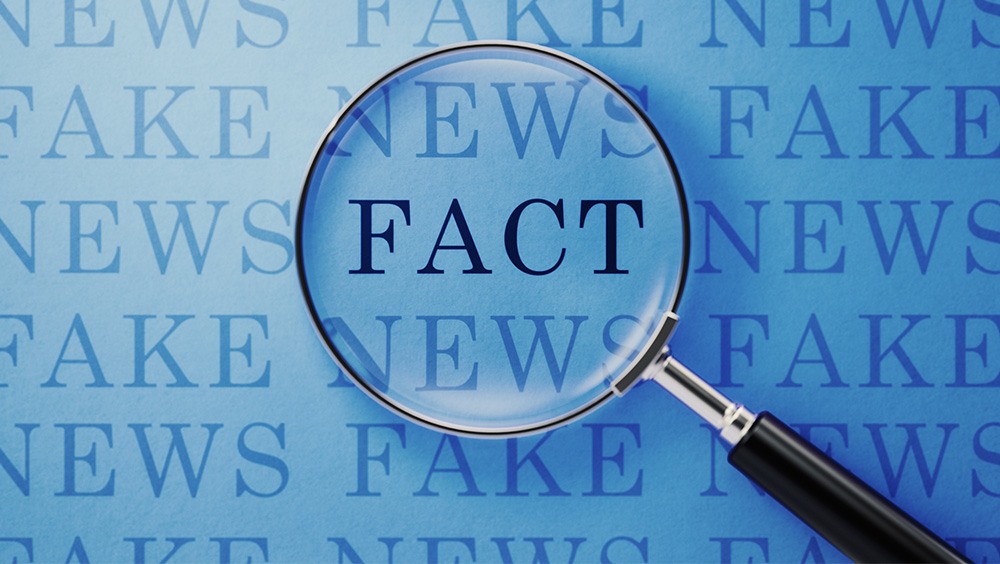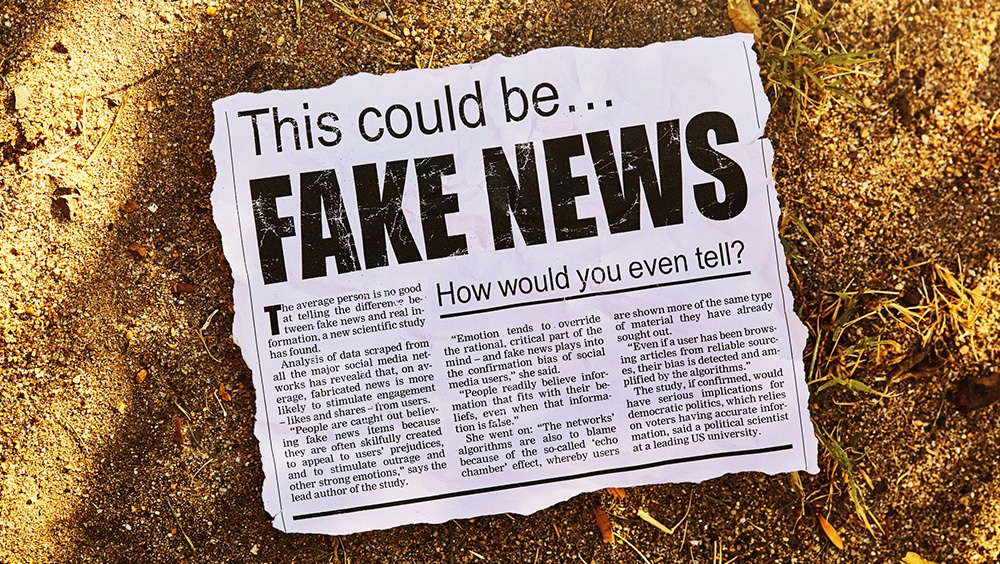How to Spot ‘Fake’ News: Tips to Detect Disinformation, Misinformation and Biased Content

Let's talk about "fake news."
You've likely heard the term before. It can be used to describe false content masquerading as actual reported news. It can also be used as a critique of information that we observe to have a problem or quality issue. It's even used to attack any information that we disagree with or that doesn't confirm our beliefs.
Imagine this: You've gotten a dreaded parking ticket. Your first reaction is to say something like, "No way, that can't be real. I don't believe it." Do you really mean you see the parking ticket as a piece of false information, masquerading as truth? Or is it a rejection of the information that doesn't appeal to you? After all, who wants a parking ticket?
It's a very human reaction, common in our everyday life.
We also have to acknowledge that the term has been used in a politicized way to discredit the work of journalists. It influences our national conversations. If you no longer want to use the term in your daily life, this article will give you more specific terms to describe the content you encounter.
After all, the First Amendment protects a wide variety of content, from real news to manipulative false content and everything in between. As much as we may want to limit false content, the restrictions needed to do so risk censorship and limit our freedom of expression.
In this post, we take a deep dive into "fake news." We discuss what it is (and isn't), give tips on how to spot "fake news" (and how to avoid it), and much more.
What really is fake news?
Understanding how the term "fake news" gets used is an important part of learning how to spot the content that isn't useful to us. A lot of what gets called "fake news" falls under the larger term of information pollution.
Information pollution: When our information supply gets contaminated with stuff like ultra-biased content, spam email, sensationalized stories, propaganda, "fake news," and much more unhelpful content that makes it harder to find the real information we need.
When you encounter a questionable media item that you think is "fake news," the first step is to identify what type of content you are actually dealing with. Each has different best practices for responding to it. Just like sorting your recycling can make it easier to process, sorting the different content types can make it easier for us to process our information environments.
RELATED: How to spot a deepfake: Tips, tools and more
Now we will break down two content types that frequently get labeled as "fake news." We'll provide you with some easy techniques for spotting and avoiding content that is designed to scam, trick or manipulate you.

Fake news type 1: The actually fake stuff
"Fake news" is informally used as a general term for false content that presents itself disguised as news. There are two major types of false content:
- Misinformation: False content without the intent to deceive.
- Disinformation: False content with the intent to deceive.
If I don't know that a storm is coming, and I tell you the weather is going to be sunny all day, that is misinformation because I didn't realize I had told you something false. If I want to play a trick on you and lie about a sunny day so that you will get wet in a storm, that's disinformation. I had the intention of tricking you with my false statement.
2024 SURVEY: Over 70% of Americans "extremely" or "moderately" concerned about election misinformation, disinformation
How to spot fake news type 1
1. See if a fact-checker has worked on the story.
The quickest option is to check to see if a fact-checking site has reported on the content and found it to be false. There are hundreds of fact-checking sites around the world so take some time to find one that covers the stories that are important to you. Check the Duke Reporters' Lab map of fact-checking sites.
2. Practice lateral reading — checking multiple sources.
Use multiple sources to check the accuracy of a story while you are reading it. Scan the piece to form a quick summary of the story. Plug the keywords into a search engine to compare coverage. If you notice that most news organizations, social media commenters known for quality reporting, and official statements match your story, it's likely you've found real information. If it doesn't add up, it's probably best to skip that content.
Tip: This technique, called lateral reading, can be used on any type of content including short videos and internet memes.
3. Evaluate the source.
You don't want to evaluate whether you like or agree with this source. Instead, you want to evaluate whether this source constructed their content in a way that you trust.
- Check the source's "about" section to see if they explain their mission or code of ethics.
- Look for links to explain where they get their information. They should cite external sources they used to support the claims in their story.
- Look for transparency with funding or sponsorship.
- Consider if they have a history of sharing factual information.
- If you have the full website address, check for standard URL endings that legitimate sites use. False sites will often use unusual URLs in an attempt to disguise themselves as legitimate websites. In the United States, .com, .edu, .org or .gov are all common domains. For non-U.S. websites, do a quick search for URLs used in the host country.
Only checking one of these things isn't enough to get a full picture of a source; you'll need to check multiple indicators to determine trustworthiness.
RELATED: What is pink slime journalism?
Remember: Not every source specializes in covering the same type of information. A good source will let you know their specialty — music, science, health, daily news, etc. — to clue you in on what content you should expect from them. Go to specialty sources for specialty information.
Tip: Building a list of trusted sources will save you time and energy when searching for information. Evaluate a source's quality to decide whether you want to eliminate it from your information gathering or add it to your library of quality content to check again in the future.

Fake news type 2: The stuff that takes a side
Sometimes the term "fake news" is used incorrectly to describe content that is biased. Biased content tends to favor one person or idea over another. Like false content, we can break biased content into two categories:
- Transparent bias: When the content creator tells you that they will be taking a side. Look at their mission statement to see if they explain their stance. Keep an eye out for labels like opinion, editorial, commentary, review or anything else the creator gives you that lets you know the piece will be taking a side.
- Hidden bias: When the creator doesn't indicate that their content will be taking a side and instead presents their work as neutral reporting. They may even claim that they are just "giving you the facts," when they are really giving you only one side of the story.
For example, if I tell you, "In my opinion, that new movie is terrible," I have been transparent in my bias. If I say something like, "That new movie is terrible," that would be hidden bias because I have presented my opinion as fact.
RELATED: Objectivity in journalism: A fair but flawed idea?
Biased content differs from false content in that it generally uses factual information but presents it in a way that favors a specific viewpoint. This makes determining whether a piece of biased content is helpful trickier because we must consider when something becomes so biased that it's not useful to us anymore.
How to spot fake news type 2
1. Check the descriptive language.
Look for dramatic or loaded language (other than by people quoted in the piece). One dramatic word generally won't be enough to bias a piece. Look for patterns of strong positive or negative descriptions.
2. Seek complexity.
Few stories are truly simple. You want to see if the piece gives you enough background information about the context of the situation. Providing well-developed context with all the facts will let you decide what your opinion is on the story you are consuming. Biased content will tend to only include the background information that supports the creator's viewpoint.
3. Look for multiple sides of the story.
Very rarely will a story be complete when it only shows one side of the situation. For most stories, you will need to see multiple perspectives, responses to accusations, and information compared from a variety of supporting sources. The story may not give equal amounts of coverage to every perspective, but there should be enough that you understand how a variety of viewpoints responded to the story.
Tip: Using these three techniques, you can determine when a story has a little bias but is still useful to you, when a story is so biased it no longer represents reality, and all points in between. Being able to read for bias equips you to read information from a variety of sources, including ones you generally agree with and ones you disagree with, to help you form your own opinion on a topic.
It's important to remember that a piece of content can be both biased and false, so you may need to use all these techniques on a single piece of content.
Know how to spot fake news — and avoid it — using these media literacy techniques
It might initially seem like an easy solution for the government to simply regulate or ban polluted content. Especially because, at first, it can take time to learn how to spot "fake news" and consume information while using these media literacy techniques.
The First Amendment is designed to lean toward protecting the most expression possible, even when information pollution gets through.
These techniques will get easier and faster with practice. Most importantly, these tools put you in charge of what you consume, not the government. You have the power.
Jessi Hollis McCarthy is the former First Amendment educational content manager for the Freedom Forum.
What Is Intentional Infliction of Emotional Distress?
Can Famous People Sue You for Criticizing Them? Actual Malice Explained
Related Content

